- Home |
- About |
- Contact Us |
- Privacy |
- Newsletter |
- Shop |
- Donate
What is Prime Factorization
Support Page
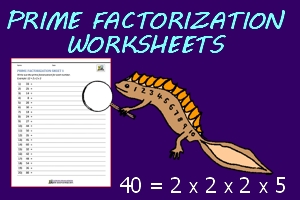
Welcome to our What is Prime Factorization support page.
This page contains all you need to know about prime factorization and more.
We also have links to our prime factorization calculator and prime factorization worksheets.
What is Prime Factorization Support Page
So what is prime factorization?
What are the uses of prime factorization?
All these questions are answered below!
What is Prime Factorization?
- Prime factorization is the process of splitting a number up into a product of its prime factors.
- Every composite (non-prime) number has its own unique product of prime numbers.
- This means that each number has its very own individual set of prime numbers that multiply together to make it.
- The prime factors are often repeated in prime factorization, sometimes quite a few times!
Here are some quick examples of what numbers look like as a product of prime factors:
- 20 = 2 x 2 x 5 = 22 × 5
- 35 = 5 x 7
- 80 = 2 x 2 x 2 x 2 x 5 = 24 x 5
- 123 = 3 x 41
- 17 = 17 it is prime already!
- 108 = 2 x 2 x 3 x 3 x 3 = 22 x 33
- 135 = 3 x 3 x 3 x 5 = 33 x 5
How does Prime Factorization work?
Here is the process for finding the prime factorization of a number:
Step 1) Find a prime factor of the number and then dividing by number by the prime factor.
Step 2) Divide the number by the prime factor.
Step 3) If the answer is prime, you have finished go to Step 5).
Step 4) If the answer is not prime, then you now have to start again by finding the prime factorization of your new number.
Step 5) Multiply all your prime numbers together and you should get back to the original number.
You have now found the prime factorization of your number as a product of prime numbers.
One of the best ways of showing prime factorization is by using factor trees.
Factor trees are a way of splitting up numbers into a product of their prime factors in a visual way.
Examples of Prime Factorization using Factor Trees
These examples will help you understand what is prime factorization by looking at how factor trees work.
Example 1) Complete the factor tree and write down the prime factorization of 12.

- The number in the top rectangle is the number we are trying to find the factors for.
- The numbers in the circles are the prime factors that multiply together to give the number above.
- The numbers in the other rectangles are composite (non-prime) numbers that we still need to find the factors for.
We know that 12 = 2 x 6 and 12 = 3 x 4 (we cannot use 1 in a factor tree!)
We can use either of these equations - it does not matter which one.
Let's use 12 = 2 x 6. So the prime factor is 2 and the composite factor is 6.
This gives us:

Now we only have the 6 left to factorize.
We know that 6 = 1 x 6 and 6 = 2 x 3.
We cannot use 1 in a factor tree, so that leaves us with 6 = 2 x 3.
This gives us:

The prime factors of 12 are 2, 2, and 3.
This means that 12 = 2 x 2 x 3 (or 22 x 3) as a product of prime factors (prime factorization).
Example 2) Let us go back to Example 1) and factorize it in a different way.
This time we will factorize 12 as 3 x 4 instead of 2 x 6.
This gives us:

Now we only have the 4 left to factorize.
We know that 4 = 1 x 4 and 4 = 2 x 2.
We cannot use 1 in a factor tree, so that leaves us with 4 = 2 x 2.
This gives us:

The prime factors of 12 are still 2, 2, and 3.
So we still end up with 12 = 2 x 2 x 3 (or 22 x 3) as a product of prime factors (prime factorization.
So we still have the same answer as Example 1) but the factor trees have some different numbers in.
The Factor Tree in Example 1) has a 6, and the Factor Tree in Example 2) has a 4.
This does not matter - the important thing is that the numbers in the circles (the prime factors) are the same in both examples.
Example 3) Draw a factor tree to find the prime factorization of 90.
![]()
We know that 2 is a factor of 90 as it is even.
90 = 2 × 45
2 is prime, but 45 is not. This gives us:

We now need to factorize 45.
We know that 45 = 1 x 45 and also 45 = 3 x 15.
The factorization we need is 45 = 3 x 15.
3 is prime, but 15 is composite.
This gives us:

We now need to factorize 15.
15 = 3 x 5, which are both prime, so we have finished.
Our final factor tree is:

This gives us a final factorization of 90 = 2 x 3 x 3 x 5 or 2 x 32 x 5
Examples of Prime Factorization without Factor Trees
This method is quicker and more compact than using factor trees to help you understand what is prime factorization.
Example 1) Find the prime factorization of 40.
40 is even, so we know that 2 is a factor (as well as being prime)
40 = 2 x 20.
Now we move on to the number 20.
Again 20 is even, so 2 is a factor.
20 = 2 x 10
So 40 = 2 x 20 = 2 x 2 x 10
Now we factorize 10 into 2 x 5 (both prime numbers) and we cannot go any further, as all the numbers are prime.
So 40 = 2 x 20 = 2 x 2 x 10 = 2 x 2 x 2 x 5
Our final answer is 40 = 2 x 2 x 2 x 5 = 23 x 5
Example 2) Find the prime factorization of 45.
45 is odd, so 2 is not a factor.
As the number ends in a 5 we know that 5 is a factor.
45 = 5 x 9.
Now we have to factorize 9.
9 = 3 x 3 (which is a prime number).
This gives us:
45 = 5 x 9 = 5 x 3 x 3
Our final answer is 45 = 3 x 3 x 5 = 32 x 5
Example 3) Find the prime factorization of 126.
126 is even, so 2 is a factor.
126 = 2 x 63
Now we need to factorize 63.
63 = 7 x 9.
7 is prime, but 9 is not
Now we have to factorize 9.
9 = 3 x 3 (which is a prime number).
This gives us:
126 = 2 x 63 = 2 x 7 x 9 = 2 x 7 x 3 x 3
Our final answer is 126 = 2 x 3 x 3 x 7 = 2 x 32 x 7
Uses of Prime Factorization
Prime factorization has several uses both in the mathematical world and also the real world.
In the mathematical world, it can be used for finding the greatest common factor or the least common multiple of a pair of numbers.
It can also be used for simplifying fractions.
In the real world, prime factorization has also been used in Cryptography - the art of secret messages, especially in the RSA public key cryptography system.
More Recommended Math Resources
Take a look at some more of our worksheets similar to these.
Prime Factorization Calculator
Our prime factorization calculator will help you factor any number into a product of its prime factors.
It will show the answer in exponential form as well as standard form.
You can use this calculator to check that your prime factors in your factor trees are correct.
Factor Tree Worksheets
We also have a selection of carefully graded factor tree worksheets to help you learn to use prime factorization.
Using factor trees is a great way to find the prime factors of a number in a visual way.
Prime Factorization Worksheets
Our Prime Factorization worksheets are at a harder level than the factor tree sheet.
As well as straightforward factorization worksheets, there are also prime factorization riddles and challenges.
Greatest Common Factor Worksheets
As well as our calculator, we also have a range of greatest common factor worksheets.
These sheets have been designed for 6th and 7th grade students.
They will help students learn and practice finding the greatest common factor of numbers up to 100.
Least Common Multiple Worksheets
We have a range of worksheets on how to find the least common multiple of two or three numbers.
The sheets vary in difficulty, and are suitable for 6th grade and up.
Sieve of Erastosthenes
The Sieve of Erastosthenes is a method for finding what is a prime numbers between 2 and any given number.
Eratosthenes was a Greek mathematician (as well as being a poet, an astronomer and musician) who lived from about 276BC to 194BC.
If you want to find out more about his sieve for finding primes, and print out some Sieve of Eratosthenes worksheets, use the link below.
Want to find out more about primes?
As well as learning about what is prime factorization, we also have information about prime numbers.
Take a look at our Prime Number page which clearly describes what a prime numbers is and what they are not.
There are also many different questions about prime numbers answered, as well as information about the density of primes.
How to Print or Save these sheets 🖶
Need help with printing or saving?
Follow these 3 steps to get your worksheets printed perfectly!
How to Print or Save these sheets 🖶
Need help with printing or saving?
Follow these 3 steps to get your worksheets printed perfectly!
Subscribe to Math Salamanders News
Sign up for our newsletter and get free math support delivered to your inbox each month. Free seasonal math grab pack included.
Return to 6th Grade Math Worksheets
Return from What is Prime Factorization to Math Salamanders Homepage
Math-Salamanders.com

The Math Salamanders hope you enjoy using these free printable Math worksheets and all our other Math games and resources.
We welcome any comments about our site or worksheets on the Facebook comments box at the bottom of every page.
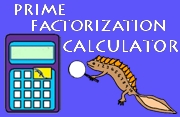
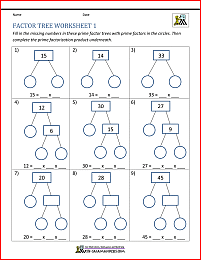
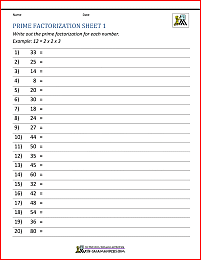
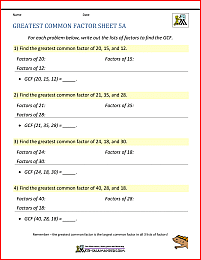


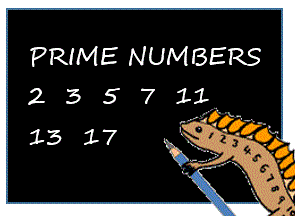

New! Comments
Have your say about the Math resources on this page! Leave me a comment in the box below.